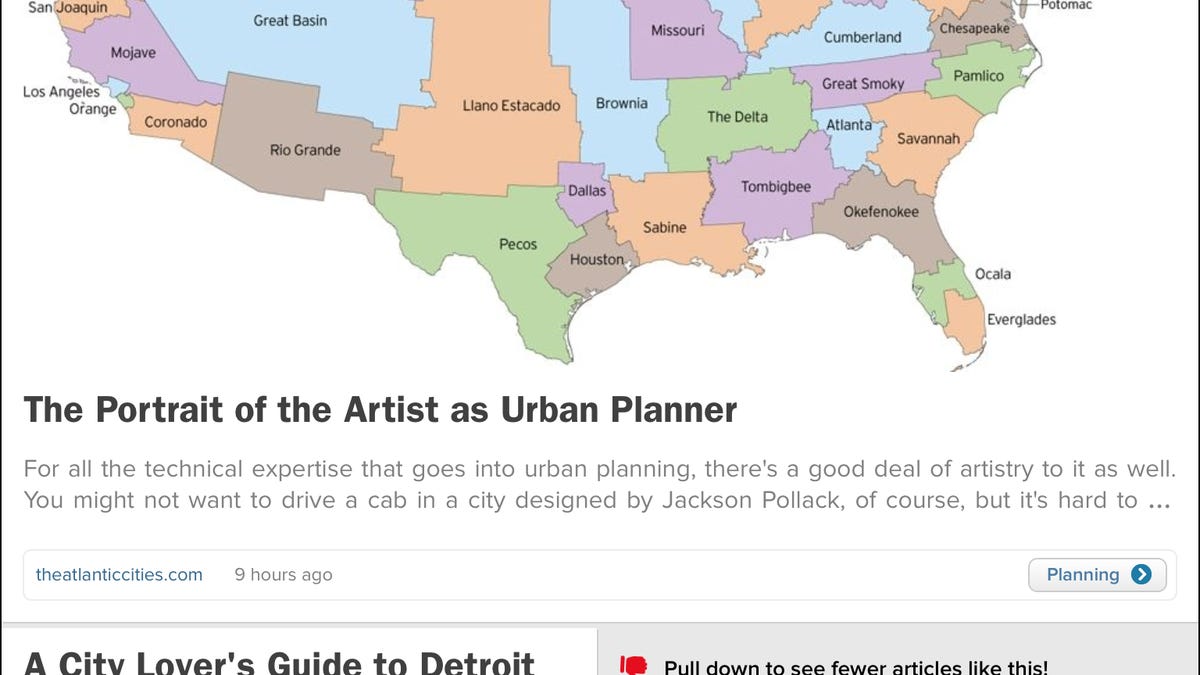Zite 2.0: A smarter, snappier personalized magazine for iOS
With its completely redesigned apps for iPhone and iPad, the CNN-owned Zite is aiming to make it easier than ever to find the news that matters to you.

From the minute I was able to put the personalized magazine app Zite on my iPhone, it became one of my indispensable tools.
Even if I glanced at it for just a few minutes at a bus stop, it was the best portal I had to the news I cared most about because it led me to stories from a wide variety of publications and on almost any topic I could want. And the more I used it, the more it knew what I wanted to read.
That was a year ago, and today, the iOS world can get its hands on Zite 2.0, a fully redesigned version of the app that aims to be better than ever at delivering the news users care about.
To begin with, Zite 2.0 is clearly a snappier-looking tool. It's got a more satisfying and more attractive interface, complete with vivid images embedded in stories and a nicer presentation of each individual story.
Zite has always been about giving users plenty of topics of news, and in the previous version, it had grown to 2,500 categories. In the new version, that number has exploded, to 40,000 topics, meaning that it can provide news to match almost anyone's taste.
But Zite is really all about discovery. And one of the best new features of Zite 2.0 is one that can take users on a journey of exploration through a topic, either by reading more on an individual subject, or branching off to other categories on a whim.
This works by presenting a topic tag button at the top of each story that is algorithmically selected to best match the topic of the article. Though the algorithm sometimes misses badly at guessing the topic, it gets it right more often than not. By simply clicking the button, you are instantly taken to a page focused on that topic. But because some stories match multiple topics, it's easy to quickly follow a thread into another topic and then another. In this way, it reminds me of how easy it is to jump around from Wikipedia article to Wikipedia article, each one different than the last, and how after a few clicks, you could never explain to someone how you got from the first to the last.
Still, Zite wants to know the topics that users care about. And there are plenty of ways in the new version to make it clear you want more of a subject. When on a topic page, you can click the heart in the header and the app knows to include more of that subject in the future. As well, the thumbs-up and thumbs-down buttons found in the earlier version continue on, albeit looking better and more streamlined. On the iPad, you used to be able to tell the app from within an article that you wanted more from an individual writer or publication, but that feature is gone now, though you can search for stories by writer and publication.
At Zite's heart is its Top Stories section, which pulls in articles it thinks will interest you from across the Web. According to Zite CEO Mark Johnson, users of the app spend 10 times as much time in Top Stories as on any other subject. Thankfully, Zite has listened to user feedback and is now providing far more stories in the Top Stories section -- and others as well -- than it used to.
But while Top Stories is the most popular category, Zite users also set up plenty of other categories, and the app's new Quicklist feature makes it possible to scroll through topics. Even better, while those topics were alphabetized in the previous version, it's now possible to manually re-organize them in any order. That's important for someone like me that wants my Politics and Technology categories to come right after Top Stories instead of being buried below many others I care less about.
Johnson said that Zite -- which launched in March, 2011, and which was later acquired by CNN -- is transitioning from being a personalized magazine to a more intelligent magazine, largely through its passel of discovery and exploration tools. The company thinks that the new features will increase the number of articles users read per day, despite that number already being nine per day in the previous version.
Though I've only had Zite 2.0 running for a day, I'd m quite certain they've succeeded in making the app more useful than ever. At its core, it still offers the same basic service -- easy access to a broad selection of relevant stories -- but now it does so in a sleeker and smarter package. Zite doesn't talk about how many users it has, but I feel confident that with the new version, the number will go up significantly. Unfortunately, Android and Windows Phone users will have to wait until they can join in the new fun.

